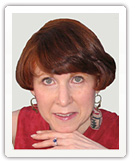E-Tips: Multi-Generational Solutions Archives
Change Through Facilitated Dialogue
A few days ago I read a post on a blog, Employee Evolution, that I recently discovered and now read regularly. The post was titled “Change” Is a Dirty Word, but the main point as I read it was about dialogue, facilitated dialogue.
The blogger, Ryan Paugh, used as an example a training seminar he, a Millennial (a k a member of Generation Y) gave for managers at the organization he works for. The company was rethinking how it was going to do business and was going to evolve. Most of the managers, who had at least 10 years tenure at the company, didn't want to have to change. But the most positive thing about the seminar and the way the company approached it was that everyone was encouraged to challenge the new business model without fear of retribution.
Paugh goes on to emphasize that Millennials have the right to challenge traditional views “without condescension” – that there should be respect for different views no matter what generation they come from. And that happens best in a community of dialogue (which is what he is trying to achieve through the blog).
This so resonates with me and what I aim to do in my work to improve the working relationships among the generations in the workplace. We need to nudge organizations beyond a primer on the attributes of the various generations and the influences and events that played a significant role in explaining how their common set of attitudes were formed. While I am happy to come in and speak for an hour or two on bridging multi-generational gaps and appreciate the opportunity, that is only the second small step toward change. (The first step is the willingness to recognize a problem.)
HOW CHANGE HAPPENS
Change occurs through open and continuing dialogue. One of the best ways, is through facilitated dialogues among members of work teams. Whether the tension-causing issues are perceived work ethic, communication style, flexibility, teamwork attitudes, expectations regarding rewards or other challenges, it is vital to get the differing views out on the table in a non-threatening manner. Having the discussions led by a neutral party in an environment of respect and absence of fear of retribution lays a foundation for producing satisfying resolutions. I find my mediation training is a very useful tool in this context.
Here is a brief outline of steps:
* Gather together as a group for a pre-determined period of time with an agenda of issues.
* Articulate the desired outcomes and common goals.
* Agree to listen to each viewpoint respectfully.
* Give each viewpoint an opportunity to be expressed pointing out specifics with a minimum of emotion.
* Allow opportunity for clarifications so each viewpoint is understood.
* Don't dwell on the past, but rather focus on possible ways to achieve the desired outcomes. Brainstorm alternative approaches.
* Choose as a group a few approaches to try. Outline action steps and responsibilities.
* Agree on ways to track results, accountability and change.
* Celebrate success and spread the word.
Yes, this will take some time, but not nearly as much time and expenditure of negative energy as ignoring the issues and sapping productivity while tensions fester. All generations (and all different viewpoints) have a right to a respectful forum. Dialogues will be encouraged in any organization that aspires to be a leader in its field and an employer of choice.
I encourage you to dialogue with me on your thoughts and with questions on how this method works.
© Phyllis Weiss Haserot, 2007. All rights reserved.

